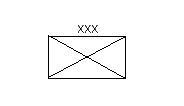![]() The Pacific War Online Encyclopedia
The Pacific War Online Encyclopedia
|
| Previous: Corlett, Charles H. | Table of Contents | Next: Corregidor |

The corps was the command echelon immediately above the division and below the army in the American and British armies. It was regarded by most armies as an ad hoc formation of variable composition, though it typically was assigned two to four divisions. A corps was typically commanded by a major general or lieutenant general. The Japanese and Chinese armies omitted this echelon and organized their divisions directly into armies.
For planning purposes, the U.S. Army defined a "type" corps
consisting of three infantry
divisions, an antiaircraft
regiment, a mechanized cavalry
regiment, two engineer regiments,
a
field artillery brigade, a
tank destroyer group,
and
various support units. After 1943, the headquarters was heavily
streamlined and the corps became a collection of divisions and
specialist battalions, with
the
battalions held in reserve or attached to the various divisions as
needed for the immediate combat mission. The distinction between a
corps and an armored corps became meaningless, and the four
armored
corps were redesignated as normal corps. The 1943 streamlining
also moved most of the service
units to the army level, allowing the corps headquarters to focus
on operations.
The Marine Corps
organized
amphibious corps in the Pacific, which specialized in amphibious assault.
Because the number of Marine divisions was limited, the Marine
amphibious corps were redesignated simply as amphibious corps and
were
assigned a number of Army divisions. They differed from regular
corps
chiefly in having transports,
landing ships, and landing craft more or
less
permanently assigned to them.
References
The Pacific War Online Encyclopedia © 2008, 2016 by Kent G. Budge. Index